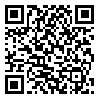BibTeX | RIS | EndNote | Medlars | ProCite | Reference Manager | RefWorks
Send citation to:
URL: http://bcn.iums.ac.ir/article-1-48-fa.html
A B S T R A C T
Introduction: Craving to methamphetamine is a significant health concern and exposure to methamphetamine cues in laboratory can induce craving. In this study, a task designing procedure for evaluating methamphetamine cue-induced craving in laboratory conditions is examined.
Methods: First a series of visual cues which could induce craving was identified by 5 discussion sessions between expert clinicians and 10 methamphetamine smokers. Cues were categorized in 4 main clusters and photos were taken for each cue in studio, then 60 most evocative photos were selected and 10 neutral photos were added. In this phase, 50 subjects with methamphetamine dependence, had exposure to cues and rated craving intensity induced by the 72 cues (60 active evocative photos + 10 neutral photos) on self report Visual Analogue Scale (ranging from 0-100). In this way, 50 photos with high levels of evocative potency (CICT 50) and 10 photos with the most evocative potency (CICT 10) were obtained and subsequently, the task was designed.
Results: The task reliability (internal consistency) was measured by Cronbach’s alpha which was 91% for (CICT 50) and 71% for (CICT 10). The most craving induced was reported for category Drug use procedure (66.27±30.32) and least report for category Cues associated with drug use (31.38±32.96). Difference in cue-induced craving in (CICT 50) and (CICT 10) were not associated with age, education, income, marital status, employment and sexual activity in the past 30 days prior to study entry. Family living condition was marginally correlated with higher scores in (CICT 50). Age of onset for (opioids, cocaine and methamphetamine) was negatively correlated with (CICT 50) and (CICT 10) and age of first opiate use was negatively correlated with (CICT 50).
Discussion: Cue-induced craving for methamphetamine may be reliably measured by tasks designed in laboratory and designed assessment tasks can be used in cue reactivity paradigm, and imaging studies related to methamphetamine dependence.
دریافت: 1389/8/2 | انتشار: 1389/5/24
| بازنشر اطلاعات | |
 |
این مقاله تحت شرایط Creative Commons Attribution-NonCommercial 4.0 International License قابل بازنشر است. |



